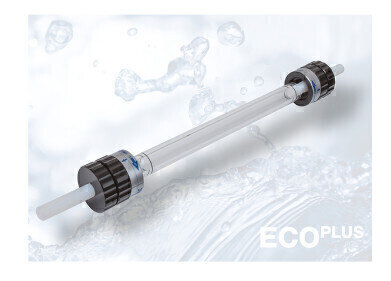Bioanalytical
An Introduction to Bioseparations
Apr 30 2015
Bioseparation is the name given to the practice of purifying biological products on a large-scale, using fundamental aspects of engineering and scientific principles. The end goal of bioseparation is to refine molecules, cells and parts of cells into purified fractions.
Biological products can be separated and purified depending upon the following characteristics: density, diffusivity, electrostatic charge, polarity, shape, size, solubility and volatility.
Differences Between Bioseparation and Chemical Separation
Although bioseparation is based on traditional chemical separation processes, they do differ in significant ways. This is because the materials being purified and separated in bioseparation are biological substances rather than the synthetic chemicals used in traditional techniques. As such, substances such as proteins, carbohydrates and nucleic acids are not suitable for the rigours of traditional techniques like packed-bed adsorption and evaporation.
Often, the desired final product is only found in very minute quantities in the starting substance from which they are refined. Because of this, vast quantities of dilute product streams must undergo processing in order to obtain a small amount of pure product. Meanwhile, there are often unwanted impurities in the starting substance which have similar genetic makeup to the desired product, thus making separation very difficult.
Because biological products are more apt to degradation than chemical ones, this rules out the use of many common organic solvents in bioseparation, since they have a tendency to act as a catalyst for degradation. Furthermore, many biological substances are unstable when heated and as such have to be handled in sub-ambient temperatures.
Bioseparation Techniques
There are many different techniques by which bioseparation can be achieved – however, there are none which currently work effectively on their own. This is because bioseparation requires a combination of high resolution (also known as selectivity) with high throughput (also called productivity). As you will notice in the table of techniques below, not a single one combines those two traits.
As a result, bioseparation must incorporate two or more techniques to achieve dual proficiency in the two categories.
High Throughput & Low Resolution High Resolution & Low Throughput
Adsorption Affinity Separation
Centrifugation Chromatography
Filtration / Microfiltration / Ultrafiltration Counter-current extraction
Precipitation Electrophoresis
Solvent extraction Ultracentrifugation
Supercritical fluid extraction
One of the more commonly-used methods of achieving bioseparation is through the deployment of a RIPP scheme (Recovery, Isolation, Purification, Polishing). This technique will first utilise one of the low resolution methods from the left column above to achieved recovery and isolation of the desired product. Then, one of the high resolution methods from the right column will purify the product and “polish” it. Polishing can refer to sterilisation, removal of contaminants and any other final processing steps before it is packaged into a marketable form.
Current Advances in Bioseparation
Because of the need for two or more different techniques to be used in achieving bioseparation, it is a highly inefficient process which requires much capital, a great deal of time investment and the use of complicated and expensive lab equipment. Indeed, even after such investment, the amount of pure product that is gleaned can be negligible.
With these deficiencies in mind, scientists are currently working on developments to the process to make it more cost-effective and efficient. The article Advances in Bio-Separations Biologics Characterisation from Cradle to Grave talks about the upcoming event if the same name in Cambridge which will delve into these problems – and potential solutions – in more detail.
Events
May 11 2025 Vienna, Austria
May 18 2025 Tempe. AZ, USA
May 21 2025 Birmingham, UK
Jun 01 2025 Baltimore, MD, USA
Jun 15 2025 Bruges, Belgium














